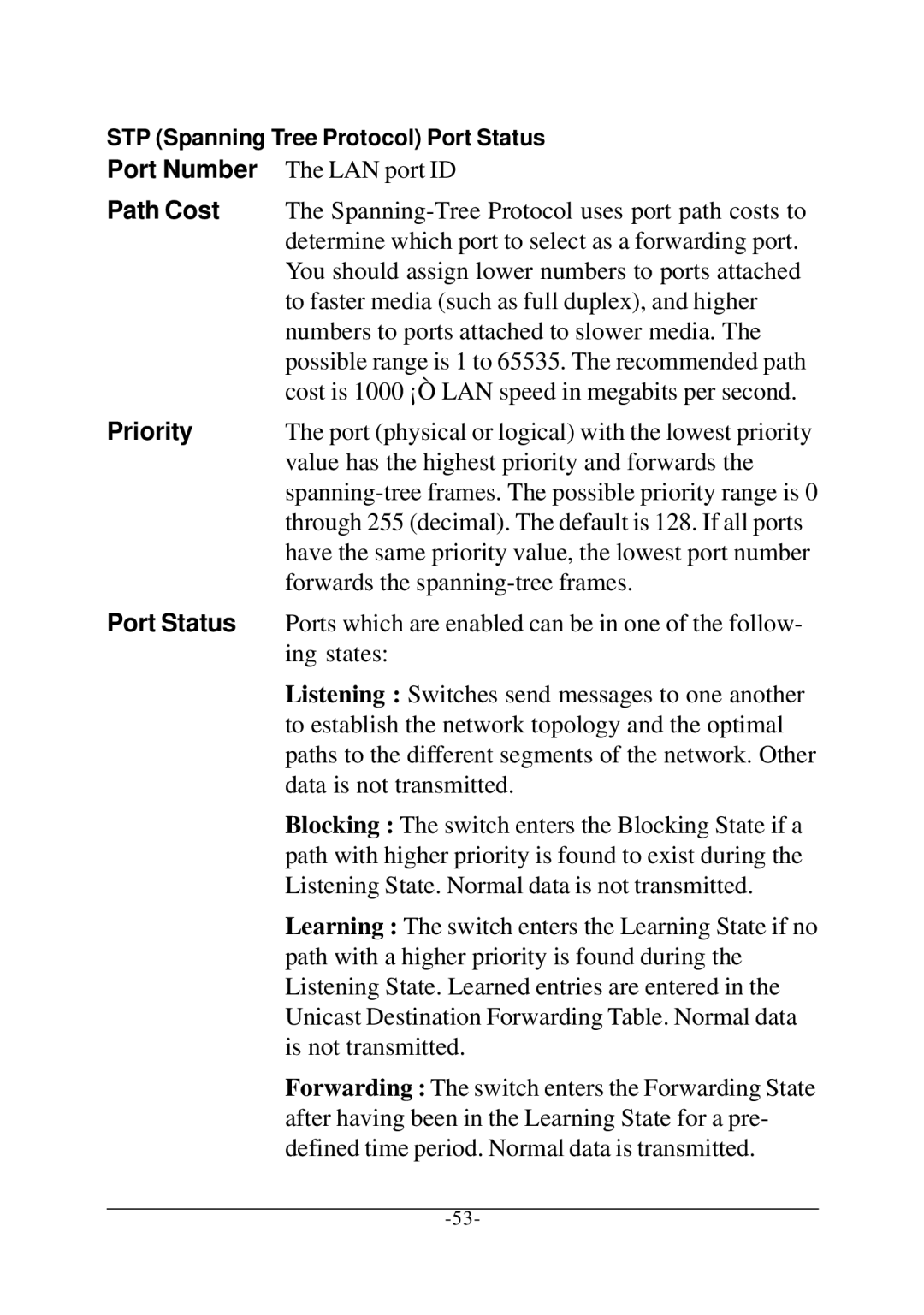STP (Spanning Tree Protocol) Port Status
Port Number | The LAN port ID |
Path Cost | The |
| determine which port to select as a forwarding port. |
| You should assign lower numbers to ports attached |
| to faster media (such as full duplex), and higher |
| numbers to ports attached to slower media. The |
| possible range is 1 to 65535. The recommended path |
| cost is 1000 ¡Ò LAN speed in megabits per second. |
Priority | The port (physical or logical) with the lowest priority |
| value has the highest priority and forwards the |
| |
| through 255 (decimal). The default is 128. If all ports |
| have the same priority value, the lowest port number |
| forwards the |
Port Status | Ports which are enabled can be in one of the follow- |
| ing states: |
| Listening : Switches send messages to one another |
| to establish the network topology and the optimal |
| paths to the different segments of the network. Other |
| data is not transmitted. |
| Blocking : The switch enters the Blocking State if a |
| path with higher priority is found to exist during the |
| Listening State. Normal data is not transmitted. |
| Learning : The switch enters the Learning State if no |
| path with a higher priority is found during the |
| Listening State. Learned entries are entered in the |
| Unicast Destination Forwarding Table. Normal data |
| is not transmitted. |
| Forwarding : The switch enters the Forwarding State |
| after having been in the Learning State for a pre- |
| defined time period. Normal data is transmitted. |
